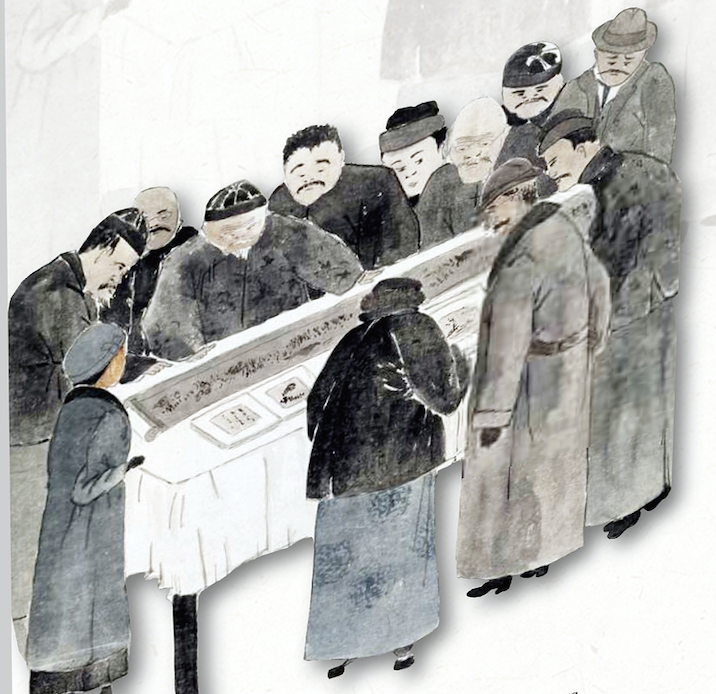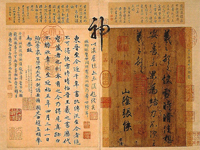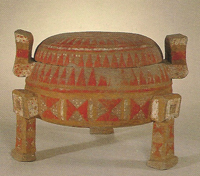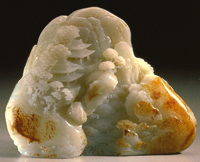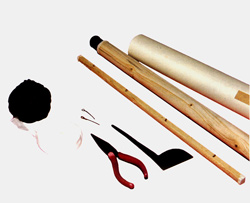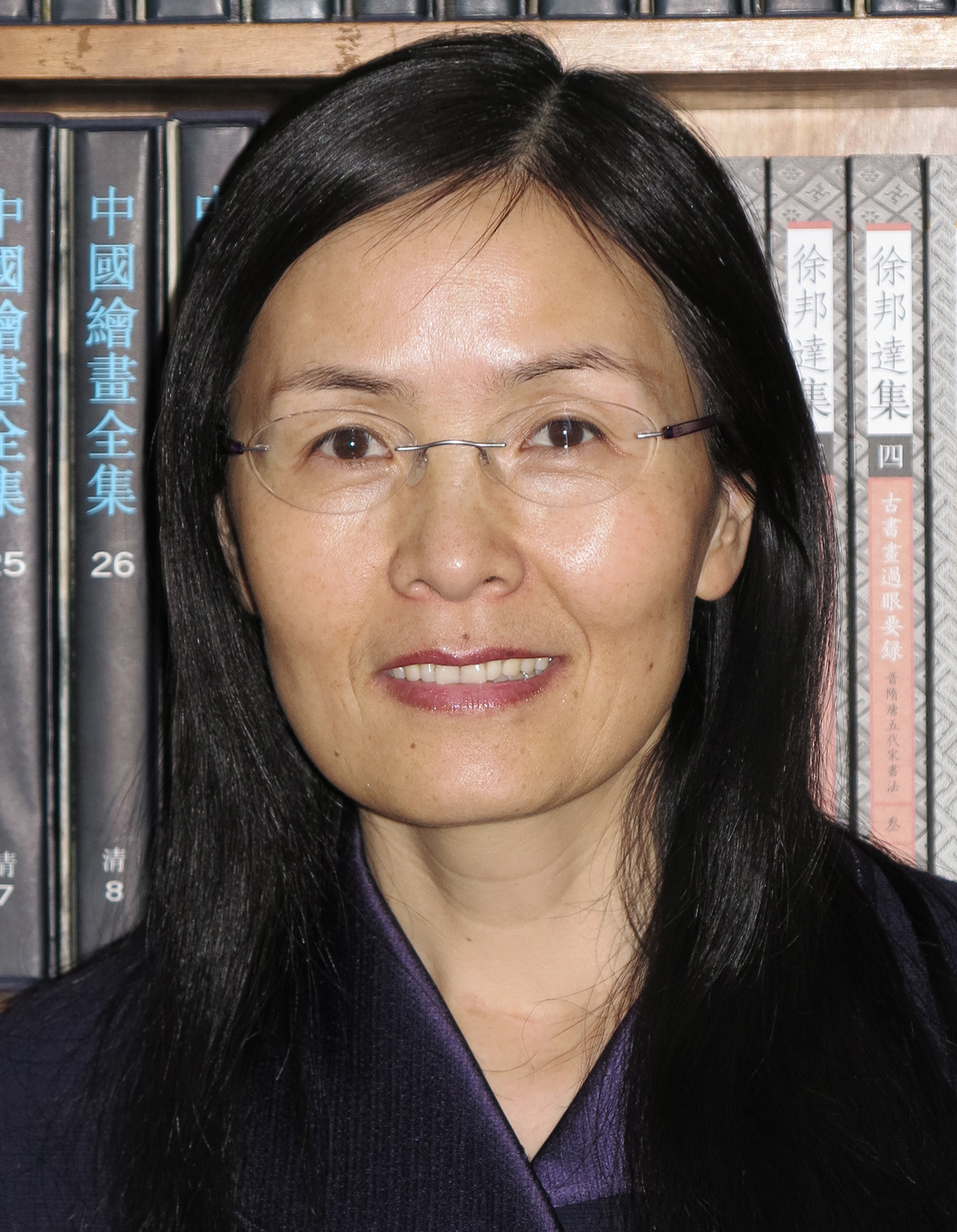WEI YANG on CHINESE ART
This website is designed for Chinese art connoisseurs and collectors, appraisers and professionals, students and teachers who wish to develop expertise in Chinese art. In her career as an educator, writer, art appraiser and Chinese art expert witness for four decades, Dr. Yang has often been asked how to appreciate Chinese art and aesthetics and how to develop competence in appraising Chinese art. To meet readers' curiosity and be helpful, Dr. Wei Yang posts her professional opinions on the connoisseurship and valuation of Chinese art from the perspective of a trained Chinese art historian (Ph.D. in Chinese art) and a practicing Accredited Senior Appraiser in Asian Art (ASA, 2010-2025) and Appraisal Review and Management (ARM, 2017-2025).
Dr. Wei Yang values humility in advancing a new career. She has been working very hard to advance her credentials, knowledge and skills that qualify a professional art appraiser since she became a Chinese art consultant and appraiser in 2005. After receiving her Ph.D. in Chinese art and Tibetan art from Northwestern University (Evanston, IL), Dr. Yang identified her professional weakness and designed an effective self-study program to sharpen her skills as an art appraiser. She earned a certificate of Fine Art and Decorative Art Appraisal from Prett Institute (New York) in 2008, a certificate of Painting Conservation from Shandong Mounting and Conservation Academy (Jinan, China) in 2010, read extensively on litigation concerning appraisal and cases concerning expert witness services and joined the prestigious American Society of Appraisers. With four decades of professional dedication to the study and research of Asian art, two decades to the mastery of appraisal methodologies and skils by earning two Accredited Senior Appraiser (ASA) designations from American Society of Appraisers, and ten years to the writing of Chinese art, Dr. Yang has been serving as Asian art appraiser, with a concentration on Chinese art, since 2005, expert witness (consulting and testifying expert) for litigation and appraisal reviewer since 2015, and a Member of the Board of Examiners (Asian Art), American Society of Appraisers (ASA, 2017-2025).
Dr. Yang is willing to light a candle for art professionals who desire to develop a new expertise in Chinese art. She believes in the possibility of developing a new expertise in Chinese art via hard work, dedication and strategy. To unveil the mystery of Chinese art appraisal, Dr. Yang shares her expertise on Chinese art, explains difficult issues relevant to the evaluation of Chinese art, offers practical strategies for handling difficult appraisal tasks with professional integrity, competence and objectivity.
Becoming a credible Chinese art appraiser is an ambitious and rewarding career goal that is worth your investment. Because the Chinese art community is desperate for new talents.
Dr. Wei Yang's New Plan
Starting in September 2025, Dr. Yang has decided to scale back her appraisal practice to free more time for finishing two new books (Chinese ceremics and Jade). She only accepts interesting or challenging appraisal and appraisal review assignments. However, she stays engaged with the appraiser profession. Her passion for Asian art and her dedication to the excellence of professional appraisal practice remain intact. Although Dr. Yang will accept less appraisal assignments, she continues to aim for the highest professional standards in her practice.Dr. Wei Yang's Goals
Dr. Wei Yang plans to write four books on Chinese art to demonstrate by examples how to evaluate Chinese fine arts (Part I and Part II), ceramics and jade. Her books are intended to educate readers about the essentials of Chinese art, introduce important Chinese artists and masterworks, and provide practical advice for developing expertise in appraising Chinese art. All the books offer the basics of Chinese art, introduce aesthetics and standards of judgment, detect forgery and provide practical advice on appraisal practice.
Dr. Yang's first book on premodern Chinese painting and calligraphy prior to 1911 (Part I: Vols 1-2) was published in 2022. She is currently completing three more books: Chinese painting and calligraphy of the 20th century (Part II: Vol. 3), Chinese ceramics (forthcoming) and Chinese Jade (in progress).
Dr. Wei Yang's new book, Wei Yang's Guide to Chinese Painting and Calligraphy (Tianjin: Nankai University Press, 2022) is Available on Amazon
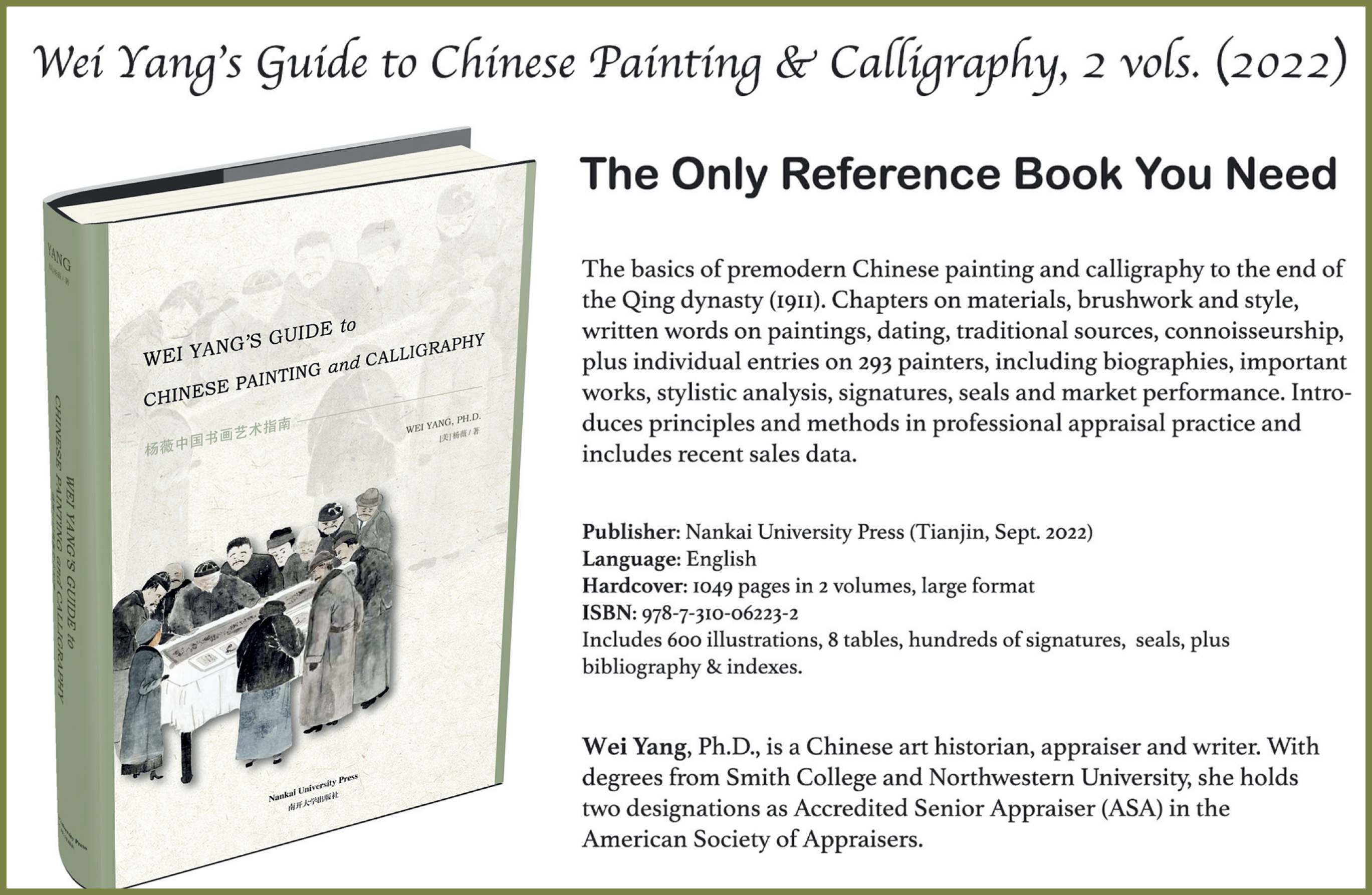
THIS BOOK INCLUDES:
• Comprehensive reference for Chinese painting and calligraphy prior to 1911
• Focus on connoisseurship, art criticism, appraisal and market trends
• Entries on 293 painters, including biographies, stylistic analysis, and market performance
• Basic introduction to Chinese painting and calligraphy
• Analysis of significant artists and their works
• Guidelines for valuation and appraisal of Chinese art
• Chapters on materials, brushstrokes, style, and written words on painting
• Insights on dating, traditional sources, and connoisseurship
• Information on artists’ signatures, seals, and recent sales data
• 600 illustrations, 8 tables, and hundreds of examples of signatures and seals
• Comprehensive bibliography and indexes
• Authored by scholar and Accredited Senior Appraiser in Asian Art
Topics discussed in this book may not answer every question you have about the appraisal of Chinese painting and calligraphy, they will certainly form a strong foundation for you to sharpen your judgment of the quality and authenticity of a Chinese fine art. Slowly with confidence, and by practice, you will build up your new expertise in classical Chinese painting and calligraphy. You will be able to apply your newly minted skills with competence to the appraisal of modern and contemporary Chinese art since the classical and the modern speak the same visual language.
By learning from the best or guided by a practicing Chinese art historian appraiser and expert witness, you will master a high level of artistic sensitivity to the visual aesthetics of Chinese painting and calligraphy. You will possess the core Knowledge of Chinese visual culture and artistic practice, a set of unmatched skills to ornament your professional integrity and objective evaluation with credibility, accuracy and relevance, the backbone of your expert opinions.

